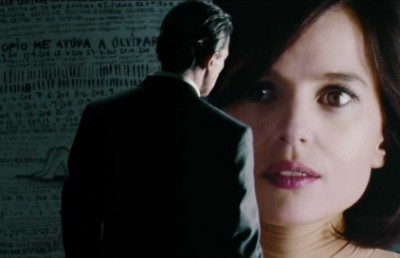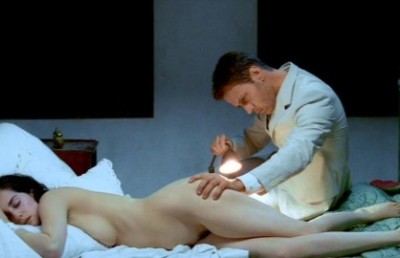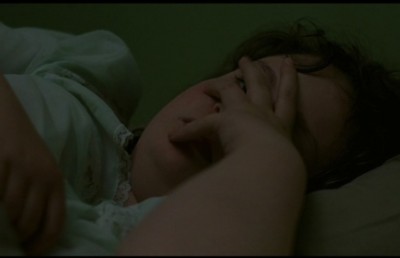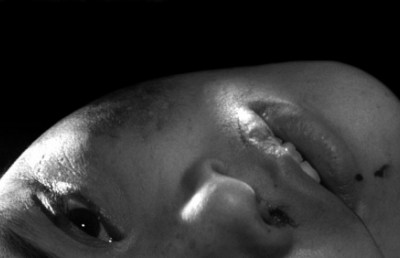The Witch Who Came From the Sea: The Scars of Sexual Trauma
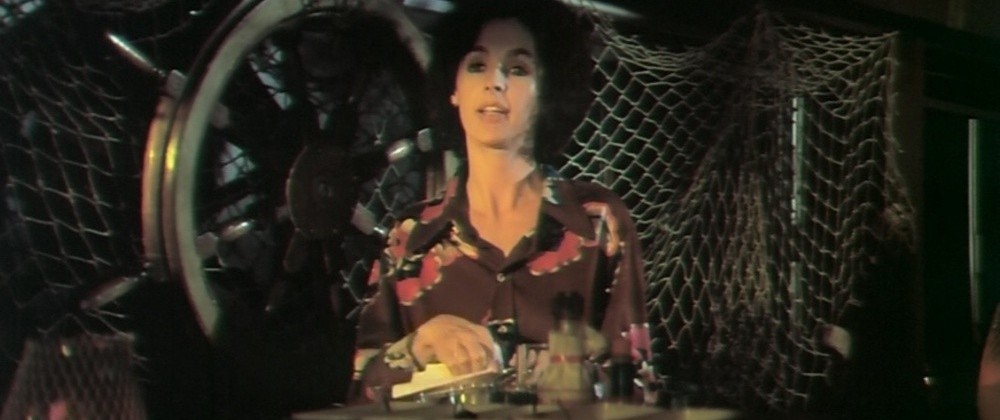
One of the most unusual genre films featuring a woman that kills –although the killing may only be in her mind– is The Witch Who Came From the Sea (1976, Matt Cimber). Although released in 1976, the film was shot in 1971, and sat on the shelf for five years before finding distribution. The wait was largely a result of the audacious content and female characterisation of Molly, played with a blend of childishness and dangerous confidence by Millie Perkins (who had appeared before this in three films by Monte Hellman: The Shooting, Ride the Whirlwind and Cockfighter). To see a woman as devilishly forward with her sexual desires as Molly in 1971/1976 must have been shocking. Her desires, however, are not grounded in reality, but in her sordid and violent sexually abused past and an unhealthy obsession with handsome male television actors (Hollywood as a fantasy land is a sub-theme). The back story is a common early life abuse story, but told through flashback and fantasy with a visual and aural style which makes it hard to distinguish whether Molly’s actions are real or dark sexualized death fantasies. Through a flashback we discover that when Molly was about 7 or 8 years old she was sexually abused and raped by her brutish sailor father. Her commingling of sex with death is a result of her father dying of a heart attack during the rape attack –if only all rapists would suffer the same fate! Molly replays this moment as an adult, at one point yelling at one of her lovers, “Could you die for love? My father did.”
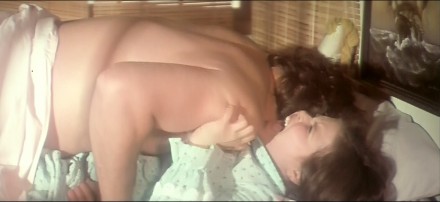
Young Molly raped by her father
The film takes place in the beach city of Malibu, California, and begins with a striking opening beach scene that announces itself as something different where sexuality and women are concerned. The scene plays as a cross between Fellini and Grand Guignol. Molly is on the beach passing time with her two nephews, Tadd (Jean Pierre-Camps) and Tripoli (Mark Livingston), but her attention is redirected to three musclemen in tight swim pants, lifting weights and working the pull up bars. Molly’s point of view is squarely focused on the men’s bulging muscles and bulging crotches, with one tight close-up of an unnaturally large crotch area being as grotesque as the final images of one the men hanging dead on a chain noose, framed and staged to look like a Roman Gladiator. The scene is a crazy rendering of the famous Kuleshov montage effect, where the power of association creates the meaning between shots as an outcome of desire; the art of montage being the art of desire: “First the object of desire [the muscular male bodies], then the desire [expressed in Molly’s look]” (Sam Rohdie, Montage, p. 27). The bluntness of Molly’s sexually ravenous gaze throws a wedge into Laura Mulvey’s famously cited theory about how classical narrative cinema subordinates female desire into the ubiquitous all-male gaze. Remember that Mulvey’s famous essay “Visual Pleasures in Narrative Cinema” was written in 1975, and the film, though released one year later, was shot in 1971.
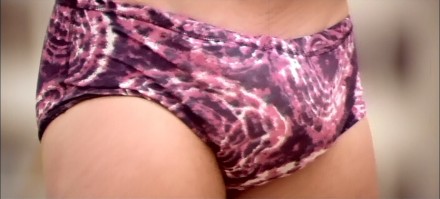
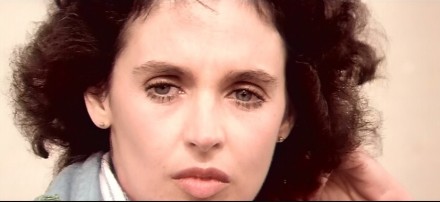
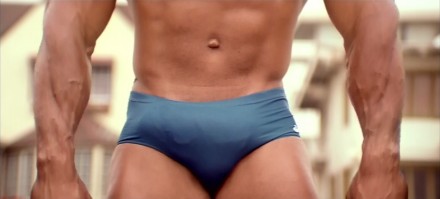
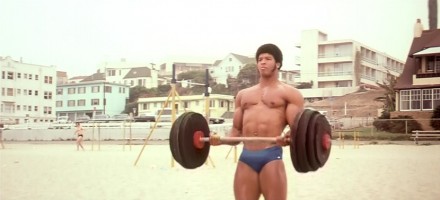
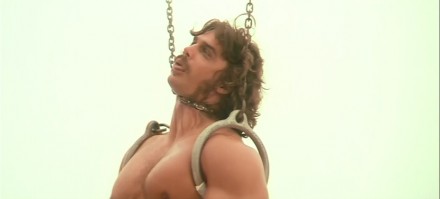
Molly’s Sexualized-Empowering Death Fantasy Montage
The men Molly desires are always first seen on television —football players, the man on the shaving commercial (“look he looks like pappa”), men she refers to “as beautiful”— heightening the idealized-fantasy nature of her desires, and how beauty is fetishized in Hollywood. For Molly, what happens on television is what happens in reality. She has no qualms about objectifying men for what they mean to her: sex toys. She imagines the TV commercial man speaking to her directly (“Hey Molly, want to come sail the world with me”). Molly’s rose-colored view of the past is underscored by the reactions of her pragmatic sister Cathy (Vanessa Brown). While Molly remembers her father as a “great man, a revered sea captain,” Cathy remembers him as “a drunken bum.” When Molly tells her nephews that grandpa romantically died “lost at sea”, Cathy retorts, “only his brains were lost at sea.”
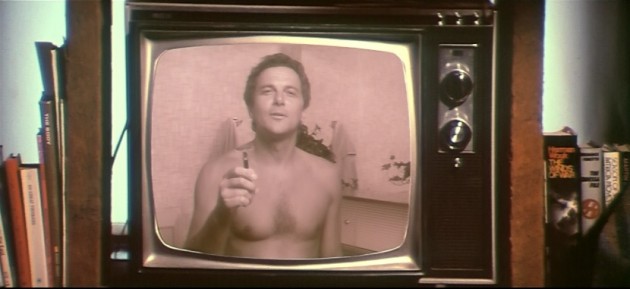
Molly’s fantasy talking man on TV
Molly likes razors, and uses them in two of her violent sexual fantasies. Most of her sexual encounters are perverse because she targets men who are physically imposing (athletes, body builders) and self-confident (actors). This make-up of the victims helps Molly because their physical strength and sense of confidence, pitted against a woman, gives them a false sense of security, which Molly uses to her advantage. Hence her sexual trysts are about her need to control powerful men, which as we see in the flashbacks with her father, pinned under his large body, she lacked as a victimized child. In the first sex-fantasy-murder she is in bed with two football players. Drugs are used as a prelude to s & m sex that involves bondage, as Molly ties the men up in ‘sailor’ knots, leaving only their one foot untied (a gesture which connects later to the primal moment where her father died while raping her). The men, at first cocky and confident in their male selves, slowly begin to realize that Molly is not all there, and that they are at serious risk. Molly begins to slash them with a small razor (the film is not without its humor, as Molly intones, holding the tiny razor in hand, “Shit, this is going to take forever”).
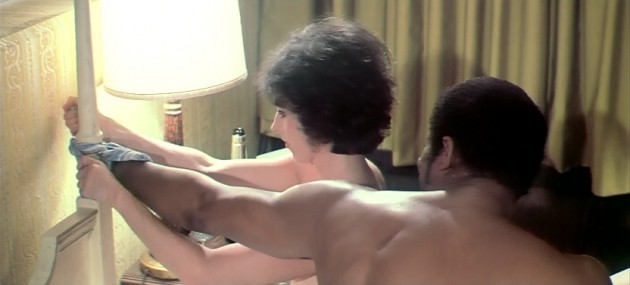
The later razor victim is a TV commercial actor, who she brashly picks up at a bar. She asks the man’s girlfriend: “Do you love him?” The girlfriend replies, “Gee, why?” Molly, as if all Id and no Superego, retorts, “Because I do….I want him.” She goes home with the actor, and in the post-coital morning scene, the man is seen shaving, nude in front of the bathroom mirror. Molly enters and playfully takes the razor from him to complete the shave. Like the earlier men, he at first feels safe in the confines of his male skin, thinking that, as a woman, she holds no risk. Before he can react, she begins to carve the razor straight down his body from neck to abdomen, viciously slicing at his groin (an aggressive percussive score augments the violence). In another sex scene with an unappealingly vain male actor, Billy Batt (Rick Jason), she invites fellatio but then attacks the man’s penis with her castrating mouth like a feral animal. This is by far the most violent and blood drenched moment in the film, going far beyond allowable levels of violence of films of that time, but made that much more subversive by the perpetrator being female. 1
Radio news items inform us that the killings are real, but the film’s style (notably a reverberating sound and slight slow motion) suggests that these killings are part of Molly’s twisted fantasy world, which nonetheless slips over into reality —witness her inability to separate television from reality (“It must be true if it is on television”)— and the way she creates a false memory of her father as a great sea captain, buried at sea, to cover the painful rape reality that she is repressing. While Molly’s sister Cathy is critical of her behaviour and over-all conduct, Molly has allies in the sympathetic ears of her boss (she waits tables at his Boathouse bar) Long John (Lonny Chapman), an older female clientele at the bar, Doris (Peggy Feury), and her two nephews Tadd and Tripoli. The visual style of the film, authored by DP Dean Cundey in his first professional effort, which was followed by stunning work for John Carpenter (Halloween, The Fog) and Spielberg (Jurassic Park), goes somewhat against the grain of horror film style, opting for soft, low contrast lighting and anamorphic framing that feeds the literate script. Rather than dark lashes of chiaroscuro Cimber and Cundey opt for a dreamy, sun-drenched haze, conditioned by the seaside location. An example of this being the opening beach scene where Molly fantasizes violent, sexualized deaths for the exercising body builders.
For a film that contains so much violence, real and imagined, Molly is spared a ‘moral’ violent death, but instead leaves this world in a peaceful way, being fed pills by her friend and sometimes lover Long John and two nephews. There is no sense that her death is retribution for her wanton ways. As she slips away from consciousness, death slips into fantasy, as a final montage alternates rapid edits between her real body on the sofa and fantasy images of her on a boat adrift at sea. The final image features Molly peacefully drifting at sea on a small sailboat, an image that pulls together all her fantasies (the mermaid tattoo on her father’s chest that she copies, the color polarized montage fantasy scenes of her on a raft littered with mutilated male corpses, and the painting of Sandro Botticelli’s “The Birth of Venus,” which is featured in a key scene).
But while some of the murders may be fantasy, Molly’s forthright sexual promiscuity, her immediate reacting to pure desire/pure Id, is as subversive, from a social gender standpoint, as the murders, standing her promiscuity on an equal level as the violence. Molly’s behaviour is as brazenly active as any female character from one of many Euro-horror films contemporary to its making, which was a rarity for North American horror of that time. However, the psychopathic or sociopathic female killer, as I addressed in my essay Women Who Kill has become much more present in the landscape of contemporary American horror films, say from 2005 onward, making The Witch Who Came in From the Sea ahead of its time in terms of horror and gender. As such, I would claim The Witch Who Came From the Sea as a missing link between the more ‘liberal’ and progressive gender dynamic of the 1970s Euro-horror and the post-(roughly) 2005 North American horror film.
The Witch Who Came in From the Sea makes a fascinating companion piece to a recent film called Felt (2014), the follow-up to director Jason Banker’s unclassifiable gem Toad Road (2012). Like Witch, Felt deals with a (younger) woman Amy (Amy Everson) who is tragically scarred from an unstated sexually abused past, and the trauma has lacerated her everyday ability to relate to people, especially men. The only positive way she has channeled her trauma is the cathartic empowering art she makes out of fabric that “She regards … as a response to rape culture and society’s objectification of women” (Marjorie Baumgarten, The Austin Chronicle). Her fabric art includes full gender-confused body suits in skin colour that come with genitalia and surreal face masks. Like Molly, Amy weaves through bouts of fantasy states which the viewer must negotiate; and the film’s visual style shares Witch‘s leaning toward a lighter, lower contrast, non-expressionist aesthetic that feels opposite to conventional horror aesthetic.

Amy (right) in car with Roxanne (Roxanne Knouse) and Kenny
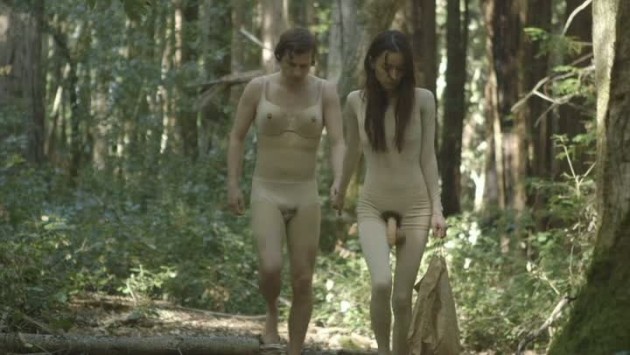
Amy and Kenny wearing Amy’s fabric art, moments before the attack
Unlike Molly, who externalizes her repressed sexual abuse trauma into promiscuous behavior, Amy recoils from human contact and struggles to engage relations with the opposite sex (though she finds some comfort with female companions). After a series of failed blind or arranged dates, Amy finally opens herself up emotionally to a potential male sexual partner in Kenny (Kentucker Audley); but when Kenny, who seems genuinely interested in Amy but also wary of her emotional fragility, admits to an indiscretion with another woman during a walk in the woods, the perceived break in trust is too much for Amy to deal with in any rational way. All of the built up aggressive and violent tension director Banks orchestrates in social scenes between Amy and other people comes to a shockingly abrupt catharsis (for Amy, not us) in the final scene. Amy mounts Kenny, who is resting back on a flat tree trunk, and begins to make love with him. While his guard is down (like the men in Witch), Amy reaches for her bag on the ground and pulls a pair of scissors out and repeatedly stabs a shocked Kenny in the chest with dozens of furiously short jabs. The gruesome attack, expected but shocking nonetheless in its brutality, is offset by the splendid natural setting and hazy sunlight filtering through trees and casting them in a glowing halo. Amy seems at rest after the kill, and then calmly castrates Kenny and uses his bloodied penis in place of her art prosthetic penis. The nature of the attack feels like a release of years long pent up anger. The manic castrating fury which Amy expresses in her murder of Kenny recalls the similar crazed fury of Molly when she attacks the vain actor’s groin in the bathroom with his own razor or Billy Batt’s penis with her teeth –enacting a literal castration complex. In both cases the violence is inflected with a sexual anger which suggests revenge for past events.
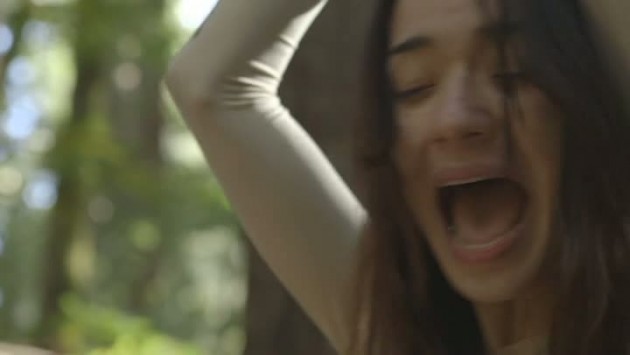
Amy’s castrating attack
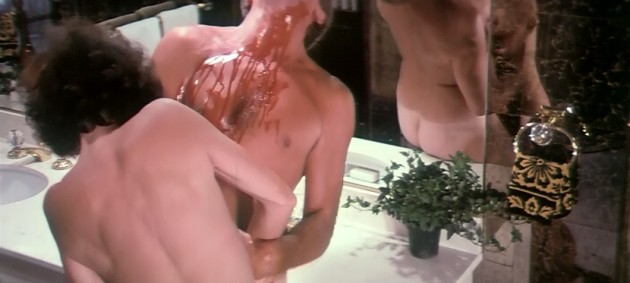
Molly’s castrating attack
It is not surprising that The Witch Who Came From the Sea had to wait many years before receiving any kind of distribution. As if the high levels of violence and the female’s sexual independence were not enough, Molly’s brazen sexual independence is not punished by a morally repugnant death, and to top it off, the film throws in a vision of Hollywood as a land of excessive drinking, drugs and vanity.
The Witch Who Came From the Sea Trailer: https://vimeo.com/100066780
The film can be viewed for free here: http://www.watchfree.to/watch-5d9a-The-Witch-Who-Came-from-the-Sea-movie-online-free-putlocker.html#close-modal
And for a small fee in a better quality version here: https://www.fandor.com/films/the_witch_who_came_from_the_sea
Notes
- the film was named as one of the “video nasties” during the 1980s censorship witch hunt in the UK ↩



